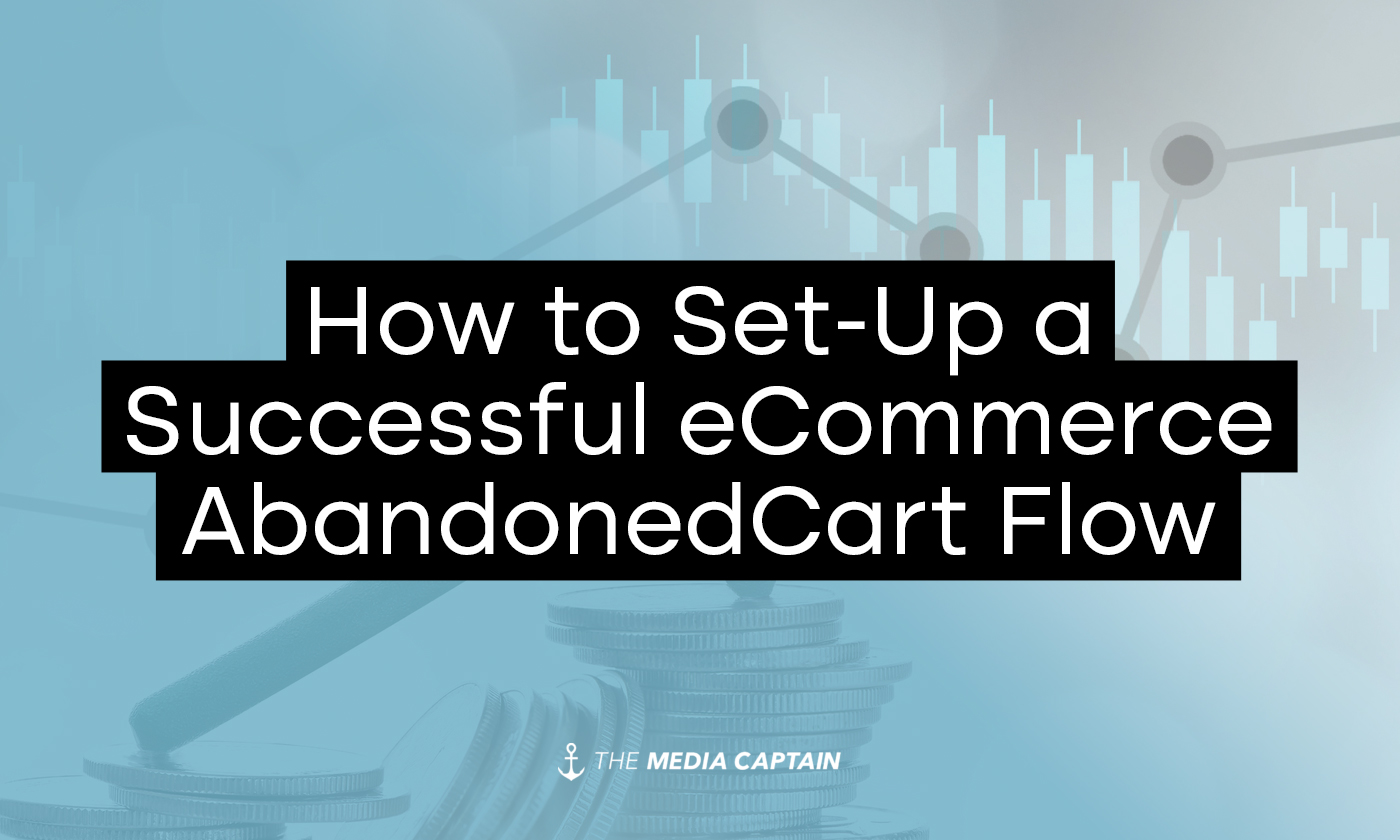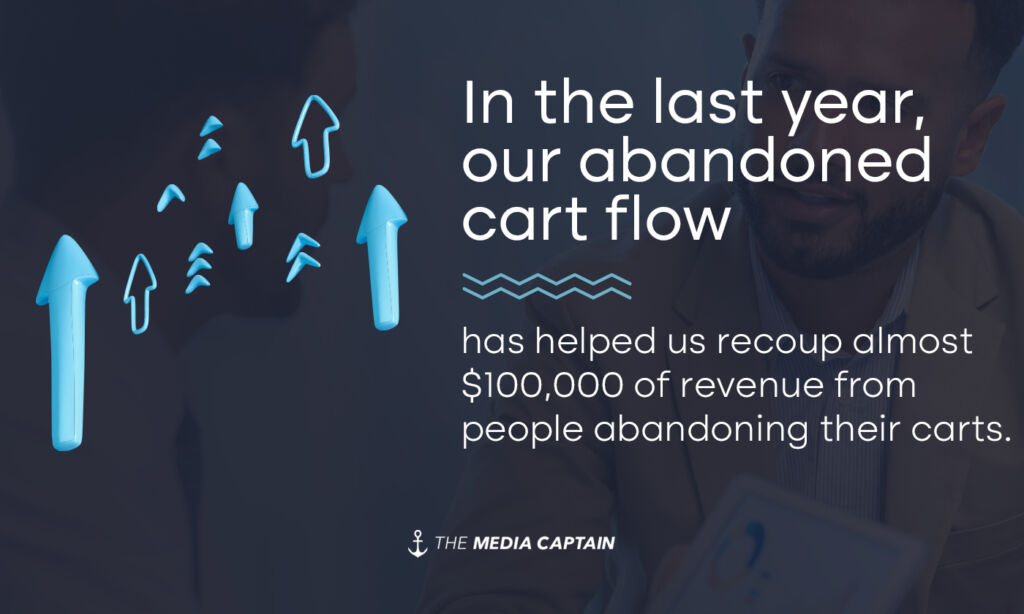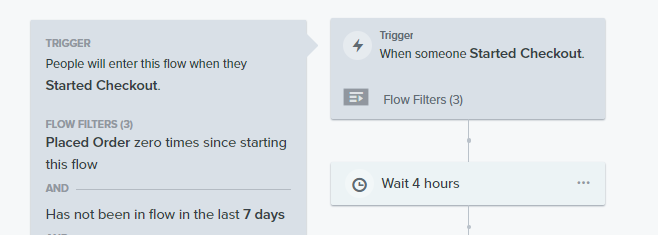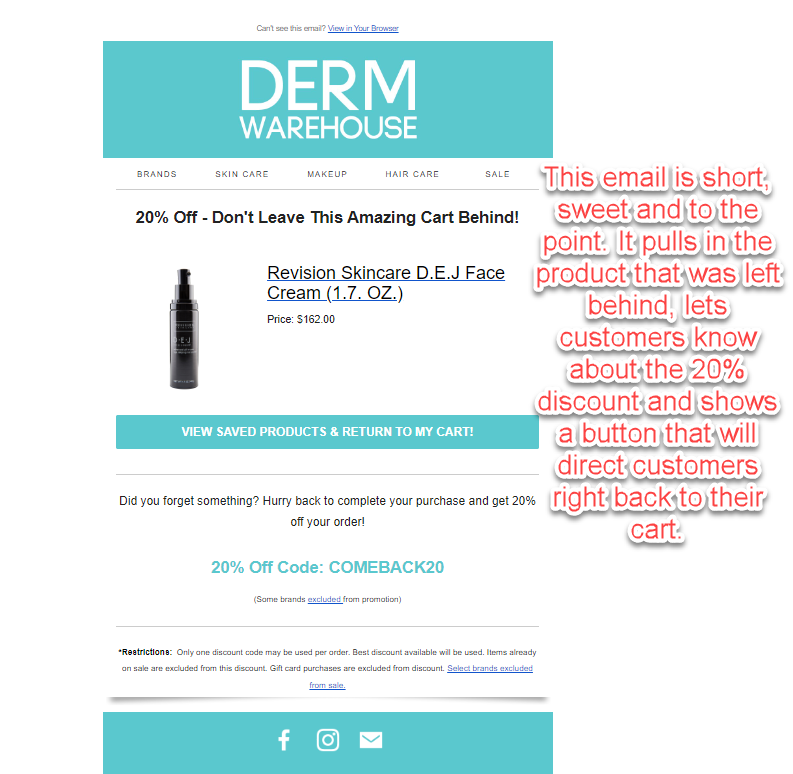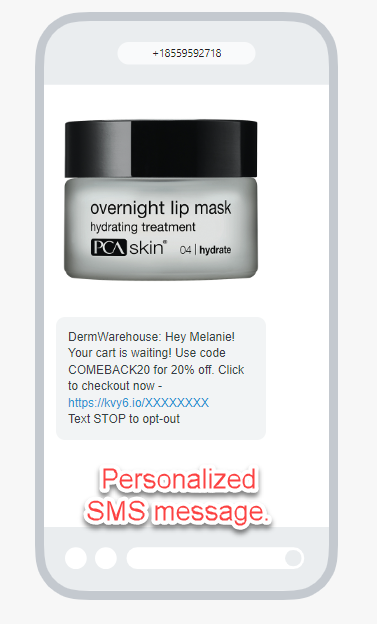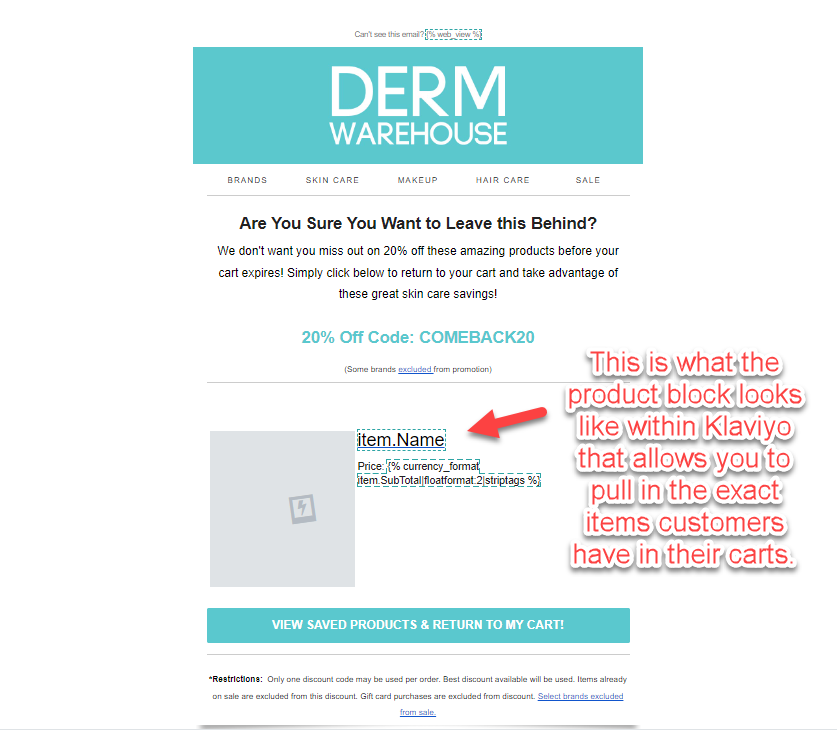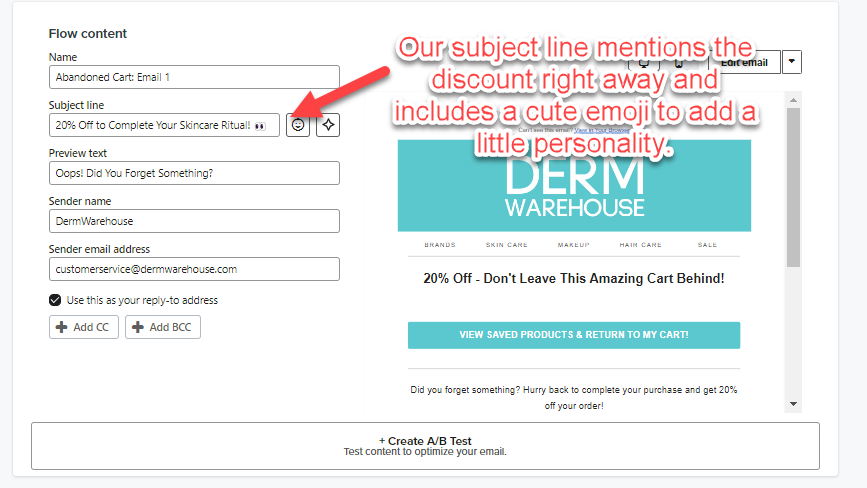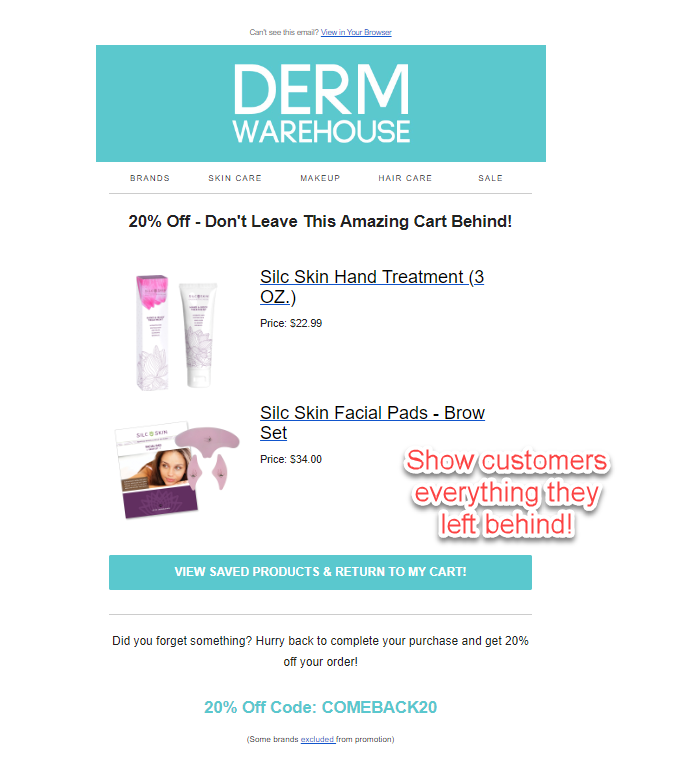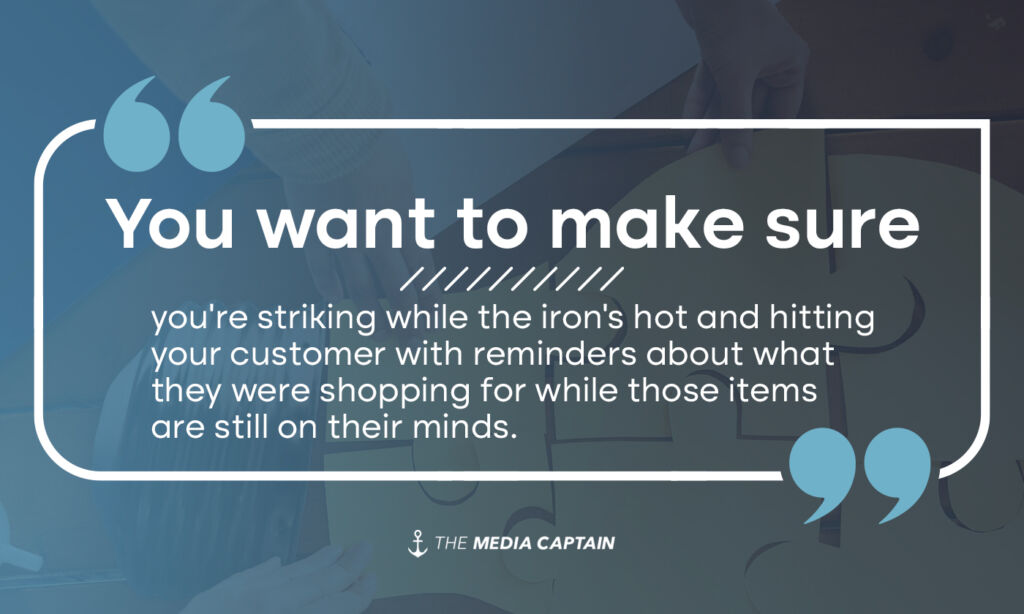Shopping cart abandonment happens when a customer adds an item to the shopping cart on your eCommerce site, but then leaves the site without making a purchase. According to BigCommerce, eCommerce stores lose $18 billion in sales revenue annually because of cart abandonment, so remarketing to these customers to try to capture that lost revenue is essential. These are customers who had a high intent of making a purchase on your site, so they are extremely valuable.
According to the Baymard Institute, the average documented online shopping cart abandonment rate is 69.82%! This means that for every 100 customers that add a product to their cart, 70 of them leave without purchasing. Imagine the additional revenue you would have if an additional 70 visitors were making purchases on your site. If you have more than 100 visitors to your site per day, that number only continues growing. What if there were a way to recoup some of those customers who were abandoning their cart? We have some great news for you. There is! Enter the abandoned cart email flow.
While many email and website platforms offer some form of abandoned cart recovery, no one does it quite like Klaviyo. This platform is so robust and offers endless personalization and customization options, making it second to none for eCommerce email marketing.
Before we started using Klaviyo about five years ago for our in-house eCommerce site, DermWarehouse, we had no way to capture the people who were abandoning their carts on our site. We were missing out on so much revenue and so many new customers! We switched over to Klaviyo primarily because we knew we were outgrowing MailChimp and needed a more robust platform where we could take advantage of email automations (flows), in particular, abandoned cart email flows. Since we made the move, we’ve recouped thousands of dollars per month. In the last year, our abandoned cart flow has helped us recoup over $100,000 of revenue from customers abandoning their carts. That’s one hundred thousand! We pay about $2,000 per month for Klaviyo. While this may sound extremely expensive (I know it did for me when we switched from MailChimp which was costing us only a few hundred dollars per month), the return from this one flow alone makes the additional cost a no-brainer.
Want to learn more about Klaviyo or need help setting up your email marketing strategy? Contact The Media Captain!
What is an Abandoned Cart Flow?
According to Klaviyo, “abandoned cart flows are a message or sequence of messages sent to someone who added an item to their shopping cart, but failed to complete the purchase.”
The goal of the abandoned cart flow is getting a customer to come back and order an item that was left in their shopping cart. Many times, abandoned cart flows will include some kind of discount or promotion and try to create a sense of urgency to place the order, such as a discount or your cart expiring.
How to Set Up an Abandoned Cart Flow
The first thing you need to do when you’re setting up your abandoned cart flow is determine who the flow is being sent to. For this type of flow, the trigger is created when someone starts checkout. If no order is placed after 4 hours, customers will receive our first abandoned cart email. We also make sure that the customer hasn’t received another abandoned cart email from us within the past 7 days, as we don’t want to inundate them with emails.
Step 1
In our first email, we let people know that we have their cart saved and offer them a discount to come back and complete their purchase. Maybe the customer got distracted while on our site and forgot to finish their order. Maybe they were price shopping and doing research when they landed on our site. They could have added a product to the cart that they intended to save for later after their research was completed. Whatever their reason for abandoning their cart, we want to remind them about DermWarehouse and give them a great incentive to come back (a discount on their order)!
In email 1, we make sure to dynamically pull in the products the customer left behind in the cart. This is the best feature of the abandoned cart emails – customers are reminded of exactly what they were shopping for.
Our email is short, sweet, and to the point. We want the main focus to be the items that they left behind, and their incentive to come back. We also make sure to include a button that takes customers directly back to their cart for easy ordering. Don’t overthink or overcomplicate these emails. You don’t want to distract customers with too much information and instead just want to remind them of what they are missing out on.
Step 2
In step 2, we incorporate SMS into our flow for anyone who is consented to receive text messages. Sending a text message at this point ensures that our customers are getting a reminder about their cart & discount in two different channels. If their email inbox is overflowing with marketing messages, SMS may be the better option to capture their attention. This ensures we’re covering all of our bases. If someone isn’t consented to receive SMS, however, they’ll get another email reminder as step two.
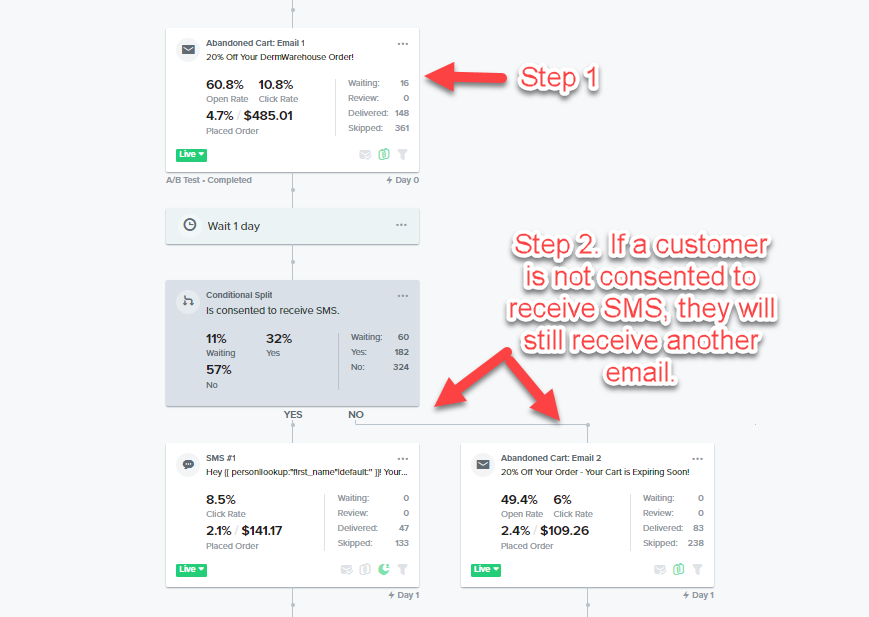 We send step 2 one day after step 1. The entire abandoned cart flow happens pretty quickly, as we want to capture these potential customers before they purchase products somewhere else or lose interest.
We send step 2 one day after step 1. The entire abandoned cart flow happens pretty quickly, as we want to capture these potential customers before they purchase products somewhere else or lose interest.
Our SMS is short and to the point. We’re able to personalize the first name in the message and include a photo of one of the products that the customer abandoned. We also include a link directly back to their cart. We hope that the personalization captures the customer’s attention and reminds them what they left behind, while also incentivizing them with a discount.
Looking for more SMS tips? Read our blog on some great text message marketing ideas for eCommerce businesses!
Step 3
Step 3 in our abandoned cart flow comes one day after step 2. We want to give customers one last chance to make their purchase if they haven’t already. We let customers know that their cart is expiring soon and remind them about their discount. Throughout the flow, it’s also important to note that customers won’t move on to the next step if they made a purchase at any point after entering the flow.
Setting up our abandoned cart flow for our in-house eCommerce brand, DermWarehouse, has given us one of the best ROIs of any campaign we’ve run. It still amazes me how much money is left on the table without something like this in place.
Tips & Best Practices for Your eCommerce Abandoned Cart Flow
Getting set up with an abandoned cart flow is the first step. It’s also important to make sure you follow the best practices below to ensure you’re capturing as many cart abandoners as possible. For DermWarehouse, we’ve tested different messaging, promotions, and timing and from what we’ve experienced, paying attention to the following is the most important.
Write a catchy subject line
The subject line of your email is the first thing your customer is going to see. It’s likely that a good subject line can be the difference between them opening the email or deleting it on the spot. With any email marketing subject line, it’s important to get your point across right away and make sure to mention any discounts or promotions.
Show all the cart items within the email
It’s extremely important to show customers the products they left behind in their cart. This will remind them what they were browsing on your website and gets them excited to come back and complete their purchase, hopefully with a discount.
Include a call to action
Not only should your email pull in images and prices of the products that were in the customer’s cart, it should also include a clear call to action with a link right back to the cart that they left behind. If customers click on the link in their email and they have their exact cart right there, they are much more likely to pull the trigger than if they end up back on your homepage and have to add each of the items all over again.
There’s a certain time frame that you’ll be able to actually save their cart link, which is all the more reason to make sure your abandoned cart flow happens within a few days.
Make the email enticing and something they won’t want to leave behind
The fact that the customer initially added the items to their shopping cart tells you that they were interested in making a purchase. Think through the reasons that they may have abandoned their cart in the first place. Were the prices too high? Was there a hidden shipping fee that was added on at the last minute?
This could be your only chance to get this customer back to your site, so give them the best offer you can. Whether that means a discount on the product, free shipping, or extra samples, keep in mind that you’ve likely already paid money to get this customer to your website (think advertising!) so you want to do everything possible to keep them around.
Timing is important
I’ve already discussed the timing of your abandoned cart flow and the fact that these should all be sent over a short timeframe. Klaviyo makes suggestions regarding the time frame based on data from their thousands of customers and we recommend following their best practices (email 1 after four hours, email 2 one day later, and email 3 one day after that).
Make sure you’re striking while the iron’s hot and hitting your customer with reminders about what they were shopping for while those items are still on their minds.
Browse Abandonment
Abandoned cart is likely a term you’ve heard many times before, but browse abandonment may be something new to you – I know it was to me when we first got started with Klaviyo. The same way that you’re able to capture data from customers who add items to the shopping cart and don’t check out, through Klaviyo, we’re also able to capture data when a customer lands on one of our product pages and leaves, without adding the item to their cart. The one caveat here is that in order to get entered into the browse abandonment flow, a customer needs to have filled out the popup form on your website, leaving their email address.
While the intent is lower for browse abandonment since the customer was only browsing a product page and never actually added the item to their cart, this flow has been extremely successful across the board for our customers.
The way that this flow is set up is similar to the abandoned cart setup, so this is another great one to keep in mind.
Learn More: 11 Can’t Miss Klaviyo Flows
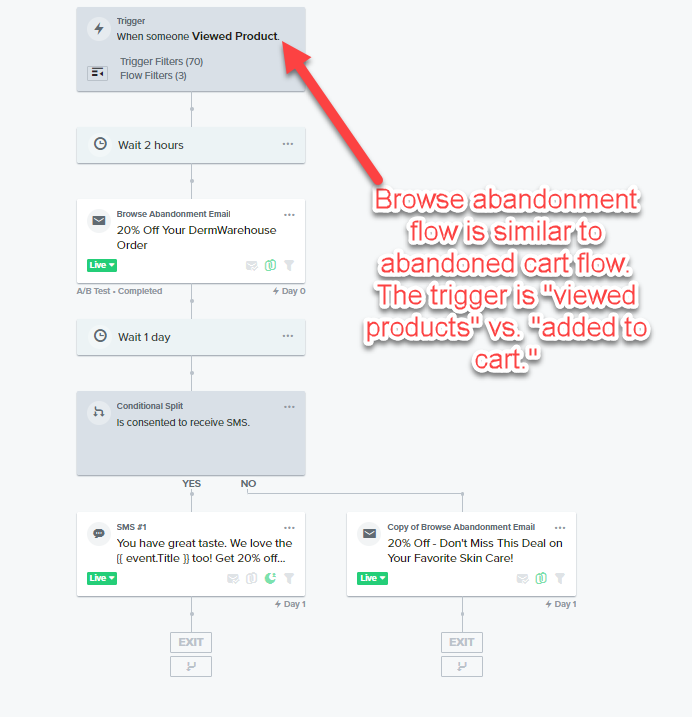
In Closing
Setting up a successful eCommerce shopping cart abandonment flow is a great way to get customers with high intent of purchasing back to your site. If you don’t have an abandoned cart flow already set up, this is low hanging fruit to bring in additional revenue and get customers back to your site!


